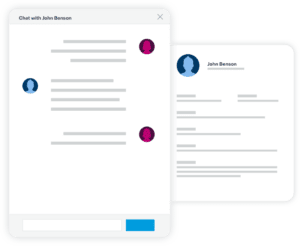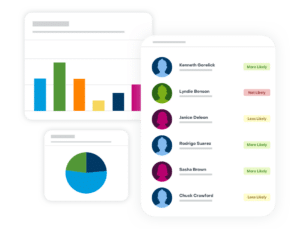How to Use CRM to Increase Customer Lifetime Value
Your customers are more than transactions. The relationships you have with them are the sum of every interaction and purchase across their entire “lifetime” as your customer.
Understanding a prospect’s potential longevity as a customer is an essential metric in helping you sell smarter and retain longer. But did you know your CRM can help you calculate your customers’ individual lifetime value?
What is Customer Lifetime Value (CLV)?
Customer lifetime value is the total valuation of a customer since the beginning of your relationship. This metric is important for a few reasons because it:
- Gives you an idea of the types of accounts that stay customers the longest so you can go after similar profiles.
- Helps you spot early signs of attrition faster based on their historical spending.
- Identifies which customers to upsell. This is especially important, considering new customer acquisition costs more than retention.
Calculating Your CLV
Consider how much money you’ve spent in your local coffee shop since your first cup. To calculate the lifetime value of your business, the owner would add up all those transactions and subtract any advertising or acquisition expenses they incurred to get you in the store. Simple, right?
Things get much trickier for larger businesses with thousands of accounts and customer touchpoints. But measuring CLV doesn’t have to be an exact science. The most important thing is assigning value to each customer relationship.
Calculate a customer’s lifetime value by:
- Identifying every customer touchpoint, from phone calls to in-store purchases to social media.
- Incorporate their account data to map out the customer journey.
- Measure how much the customer spent at each touchpoint.
- Add each touchpoint’s value together over the customer’s lifetime.
This measurement can also be represented as a formula:
Customer lifetime value = customer value X average customer lifespan
In this formula, customer value is a buyer’s average purchase frequency multiplied by their average purchase value. Average customer lifespan represents the average length of time they continue buying from you.
It’s also important to calculate CLV alongside customer acquisition cost (CAC). Like reviewing a profit and loss statement, if it takes more money to acquire a new customer than their total value to your company, you’re probably losing money.
How Your CRM Can Help Determine CLV
Confused? A CRM makes gathering all this information easier and more centralized. That’s because it holds data from every department (and, therefore, every possible customer touchpoint) in one place.
Calculating CLV is a great way to predict your gross margins, profit margins, and customer acquisition costs—metrics that depend on CRM data. To maximize CLV with your existing customers, first identify:
- Your best customers
- How you can better serve them and what value that creates
- How can you increase customer share
- How can you improve net profit
A CRM helps answer these key questions. That’s because it manages customer relationships while helping define data to be used for better decision-making. In the end, everyone from sales teams to managers better spend their time with customers and prospects.
A CRM also helps increase CLV with easier access to data for more personalized service, upselling, and marketing. A CRM allows you to:
Increase Specificity and Segmentation
Having customer data in one place allows you to drill deeper to identify every touchpoint and their value. You can also assess the customer’s industry, company size, products purchased, and how long they’ve been a customer to then target new customers in similar segments. When a sales rep leaves detailed information about customer interaction, service reps can use it to their advantage down the road when the same person has an inquiry or complaint.
Personalize Marketing at Scale
Activate your customer data to improve marketing, encourage repeat sales, and increase retention. When you personalize your interactions at every touchpoint (e.g., emails, direct mail, promotions, etc.), you demonstrate familiarity with and appreciation for the customer. This helps to strengthen relationships and encourages them to stay.
Reduce Customer Attrition
Use your CRM to track customer behaviors and interactions. If they begin to spend or engage less with you, it could be a sign of churn. If you’re unsure about customer sentiment, automate Net Promoter Score or customer satisfaction surveys and spend time with accounts that stop responding or provide negative feedback.
How to Increase CLV with SugarCRM
SugarCRM helps you quickly gather all the metrics you need to determine customer lifetime value. With broader visibility of all your customers and touchpoints, you can easily identify:
- Which accounts are at risk of attrition
- Which customers provide the highest value
- Which prospects are most likely to convert and provide high CLV based on current customers
Be proactive by sending out customer surveys at predefined times to get a feel for their sentiment and likelihood to renew/recommend. You can even set alerts for your CRM to notify you when customers are starting to churn based on pre-select thresholds.
SugarLive omni-channel engagement allows you to gauge customer sentiment at every touchpoint — whether sales calls or support queries — to follow up on customer interests and even observe your representatives’ performance.
Start driving increased CLV with a CRM that removes busywork so you can focus on creating customers for life. Speak with a Sugar representative today to learn how high-definition customer experiences make all the difference.



